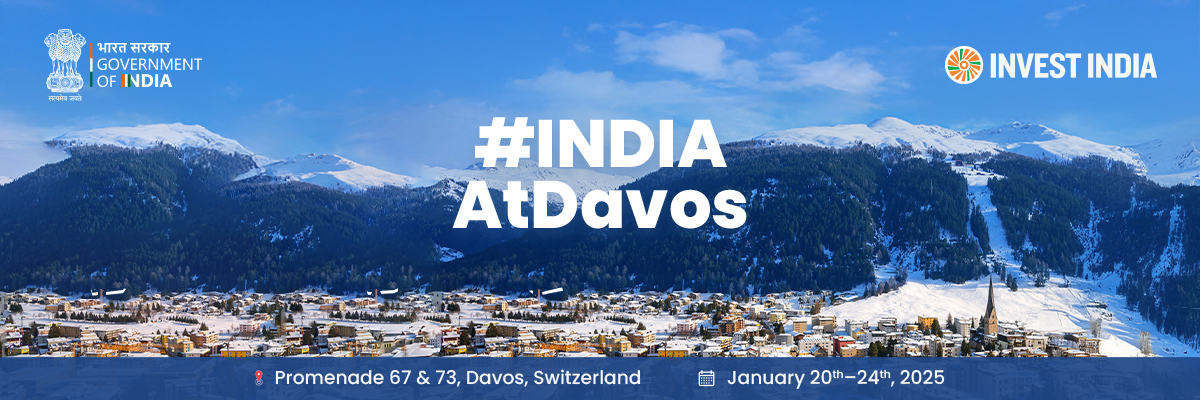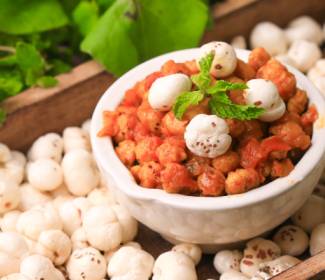Agriculture has long been a cornerstone of India’s economy, positioning the country as a global leader in agricultural production. India is the world’s largest producer of milk, grains, fruits, vegetables, pulses and spices—and ranks as the second-largest producer of rice, wheat, cotton, sugarcane, farmed fish, sheep and goat meat and tea.
This diverse agricultural base, coupled with rising domestic demand and supportive government policies, has propelled the nation’s food-processing sector to the forefront of global industry.
The depth and breadth of India’s agricultural diversity, rising domestic demand and supportive government policies have propelled the nation’s food-processing sector to the forefront.
A treasure trove of latent potential, India’s food and vegetable processing sector offers infinite possibilities for growth. As of 2023, the food- and vegetable-processing sector grew at an average annual rate of roughly 5.35% over eight years.
Furthermore, the development of the food-processing industry also positively impacts other ancillary sectors like food-manufacturing, which includes the manufacture of jaggery, animal feed, aerated water and more, which grew at an average annual rate of 5.2%.
India’s fruit- and vegetable-processing sector has the potential to transform the economy. Having 161 million hectares (MH) of arable land (55 MH irrigated) and varied agri-climatic zones, India has a natural and comparative advantage.
Between 2022 and 2027, the nation’s domestic food market alone is expected to rise by almost 47%, reaching a valuation of $1,274 billion. The food-processing sector’s gross value addition (GVA) at current prices increased from ₹2.97 lakh crore in 2019-20 to ₹3.22 lakh crore in 2020-21.
In 2022-23 alone, the sector accounted for 7.66% and 8.45% of GVA in the food-manufacturing and agriculture sectors, respectively. Foodgrain production reached a record high of 329.7 million tonnes, while oilseed production reached 41.4 MT. Sustaining the upward trajectory remains the focus of the government through adequate strategies and policies to strengthen the sector’s global competitiveness and enhance productivity.
The Government of India has been instrumental in propelling the nation’s food-processing sector forward with initiatives to improve India’s food- and vegetable-processing industry’s global reach. This includes the Production-Linked Incentive Scheme for Food Processing Industry (PLI-SFPI) to scale up the food-processing sector and support Indian food brands break into international markets.
With a budget outlay of ₹10,900 crore, the scheme has been incentivising the production of four major food product segments, which include Ready to Cook/Ready to Eat (RTC/RTE) foods such as millets-based goods, processed fruit and vegetables, marine products and mozzarella cheese.
It also covers SMEs focused on innovative/organic products, such as free-range eggs, poultry meat and egg products. Lastly, the scheme offers financial aid to support in-store branding, shelf space rental and marketing initiatives to promote Indian food brands abroad. India’s extensive agricultural resources and nurturing government initiatives have expanded the nation’s food-processing facilities. It has emerged as a major supplier of processed food across the globe, with a 23.4% share in India’s agricultural exports at ~$10.88 billion in 2023-24.
However, waste is a major challenge that the food-production and food-processing sector faces. Cereal waste in India ranges between 3.89% and 5.92%, whereas losses from fruit and vegetables range from 4.87% to 15.05%.
Food losses in the milk, meat, poultry and marine fisheries industries, ranging between 1% to 6%, have also been reported. By lowering post-harvest losses and preserving food items along the supply chain, India’s food-processing sector contributes significantly to sustainability.
Food-processing levels have increased significantly across several categories, with meat-processing leading the pack with a 34.2% increase from 2018 to 2019. Followed closely by coarse cereals (29.4%), milk (21.1%) and fish (15.4%). Fruit and vegetables have also grown steadily, with processing rates of 4.5% and 2.22%, respectively.
These impressive growth percentages demonstrate India’s food-processing sector’s potential for scalability. Scalable food-processing technologies, combined with sustainable investments, have the potential to ensure food availability for the nation year-round and consolidate its position as a global food-processing basket.
Cognisant of the potential and challenges that the food-processing sector faces in the nation, the government has initiated various policy reforms and schemes stimulating innovation.
The PM Kisan SAMPADA Yojana, with an ₹4,600 crore outlay, has been implemented to reduce food losses and buttress the existing infrastructure of the food-processing sector. The initiative has been formulated to enable the development of new food-processing facilities and integrated cold chain infrastructure to reduce food waste and enhance existing preservation capabilities.
According to the 2022-23 Annual Survey of Industries (ASI) report, the food-processing industry is one of the largest employers in the nation, accounting for 12.41% of India’s total workforce.
Since January 2024, the 143 projects sanctioned under PM-KSY are expected to create more than 0.57 lakh jobs—directly and indirectly—and benefit nearly 3.53 lakh farmers.
Furthermore, the industry also actively promotes inclusion by employing over 2.27 lakh women workers. A Household Consumption Expenditure national-level survey—conducted with 2.61 lakh households, including1.07 lakh in urban areas, in 2023-24 —showed that 47% of monthly expenditure in the 1.54 lakh rural households was spent on food, with processed foods and beverages accounting for approximately 10%. It far exceeds the money spent on produce like meat, vegetables, fruits, fish, etc.
Urban households reported that food accounts for 39% of monthly spending, with beverages and processed foods accounting for 11% of the total, outstripping produce in a similar pattern. The demand for processed food is rising nationwide, offering fertile opportunities for investments in the sector.
As consumer preferences shift towards high-quality and sustainable products, there is an increasing focus on organic farming, digital solutions and technologies that extend shelf life to cater to the global demand for health-conscious food items. This trend presents a significant and unprecedented growth opportunity for India’s food-processing sector.
Sustainability and inclusivity are twin goals for India’s food and vegetable processing sector. The Ministry of Food Processing Industries has actively developed post-harvest infrastructure and processing facilities, which includes strengthening transport and farmer-training programmes, to promote overall food-processing sector development, such as reducing post-harvest losses and increasing value addition.
Incentives for investments in India’s food- and vegetable-processing sector abound and include approvals for 100% FDI through the automated route. A concessional rate on customs duty for imported equipment under the Project Imports Scheme and a 100% income tax deduction on capital expenditure to set up and operate a cold chain or warehouse for agricultural produce.
Moreover, a Special Food-Processing Fund with a budget of ₹2,000 crore was established with the National Bank for Agriculture and Rural Development (NABARD) to provide affordable credit to approved food parks and their units.
Supported evenly by technological improvements, government policies, sustainability and inclusivity initiatives and a rich agricultural heritage, India is on its path to becoming a global hub for food processing. Ensuring international market standards and traditional Indian food-preservation techniques are deliciously paired for exponential growth.
To learn more about India's presence at WEF 2025 and to register in panels, Click Here
- https://www.worldbank.org/en/news/feature/2012/05/17/india-agriculture-issues-priorities#:~:text=India%20is%20a%20global%20agricultural,65m%20ha%20of%20India's%20land.
- https://www.mofpi.gov.in/sites/default/files/mofpi_annual_report_2023_eng_5-6-2023_new.pdf
- https://www.mofpi.gov.in/sites/default/files/volume1.pdf_0.pdf
- https://www.ciifoodpro.in/file/CII%20Report%20on%20FOOD%20PROCESSING%20SECTOR%20IN%20INDIA%20-%20Potential%20for%20Southern%20States.pdf
- https://www.mofpi.gov.in/sites/default/files/table-2_english.pdf
- https://www.indiabudget.gov.in/economicsurvey/doc/eschapter/echap09.pdf
- https://www.indiabudget.gov.in/economicsurvey/doc/eschapter/echap09.pdf
- https://www.mofpi.gov.in/PLISFPI/central-sector-scheme-production-linked-incentive-scheme-food-processing-industry-plisfpi
- https://www.mofpi.gov.in/PLISFPI/central-sector-scheme-production-linked-incentive-scheme-food-processing-industry-plisfpi
- https://static.pib.gov.in/WriteReadData/specificdocs/documents/2024/sep/doc2024918397101.pdf
- https://pib.gov.in/PressReleaseIframePage.aspx?PRID=1885038
- https://www.mofpi.gov.in/sites/default/files/final_report_of_lop_july_2021.pdf
- https://www.mofpi.gov.in/Schemes/pradhan-mantri-kisan-sampada-yojana
- https://pib.gov.in/PressReleaseIframePage.aspx?PRID=2001940
- https://mospi.gov.in/sites/default/files/publication_reports/HCES%20FactSheet%202023-24.pdf
- https://www.sciencedirect.com/science/article/pii/S2666154324002758
- https://pib.gov.in/PressReleasePage.aspx?PRID=2091601
- https://pib.gov.in/PressReleseDetailm.aspx?PRID=2051719®=3&lang=1
- https://www.mofpi.gov.in/
- https://pib.gov.in/PressReleaseIframePage.aspx?PRID=1848845
- https://www.mofpi.gov.in/sites/default/files/ProjectImportGuidelines_0.pdf
- https://www.foodprocessingindia.gov.in/information/details/fiscal-incentives
- https://www.pib.gov.in/PressReleasePage.aspx?PRID=1848845
- https://www.nabard.org/content1.aspx?id=570&catid=8&mid=8






